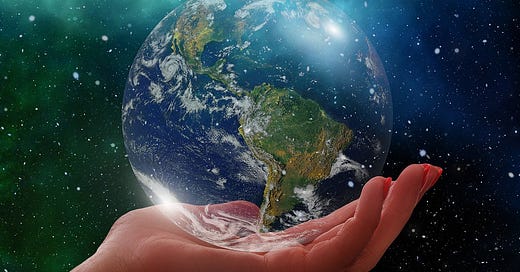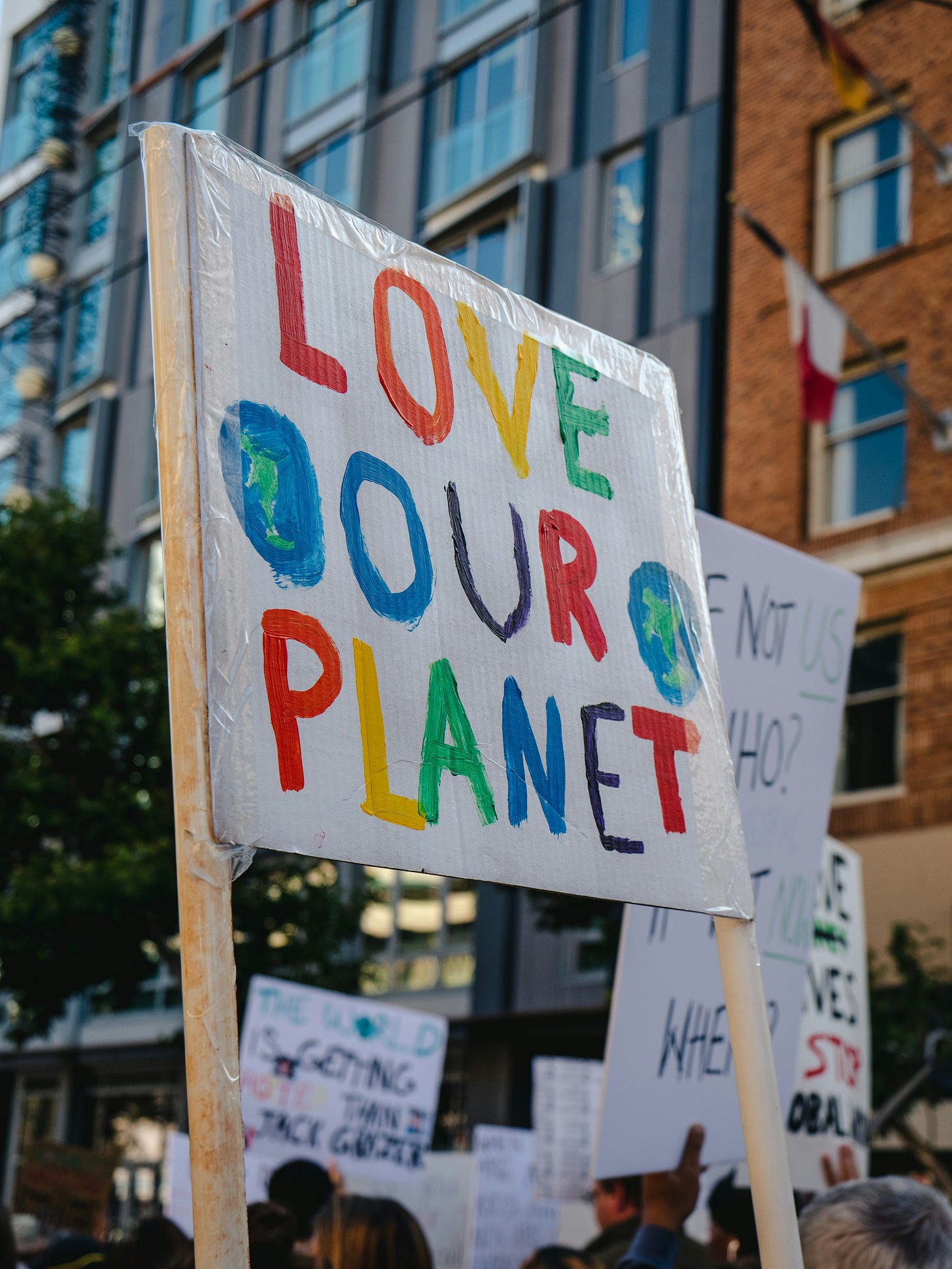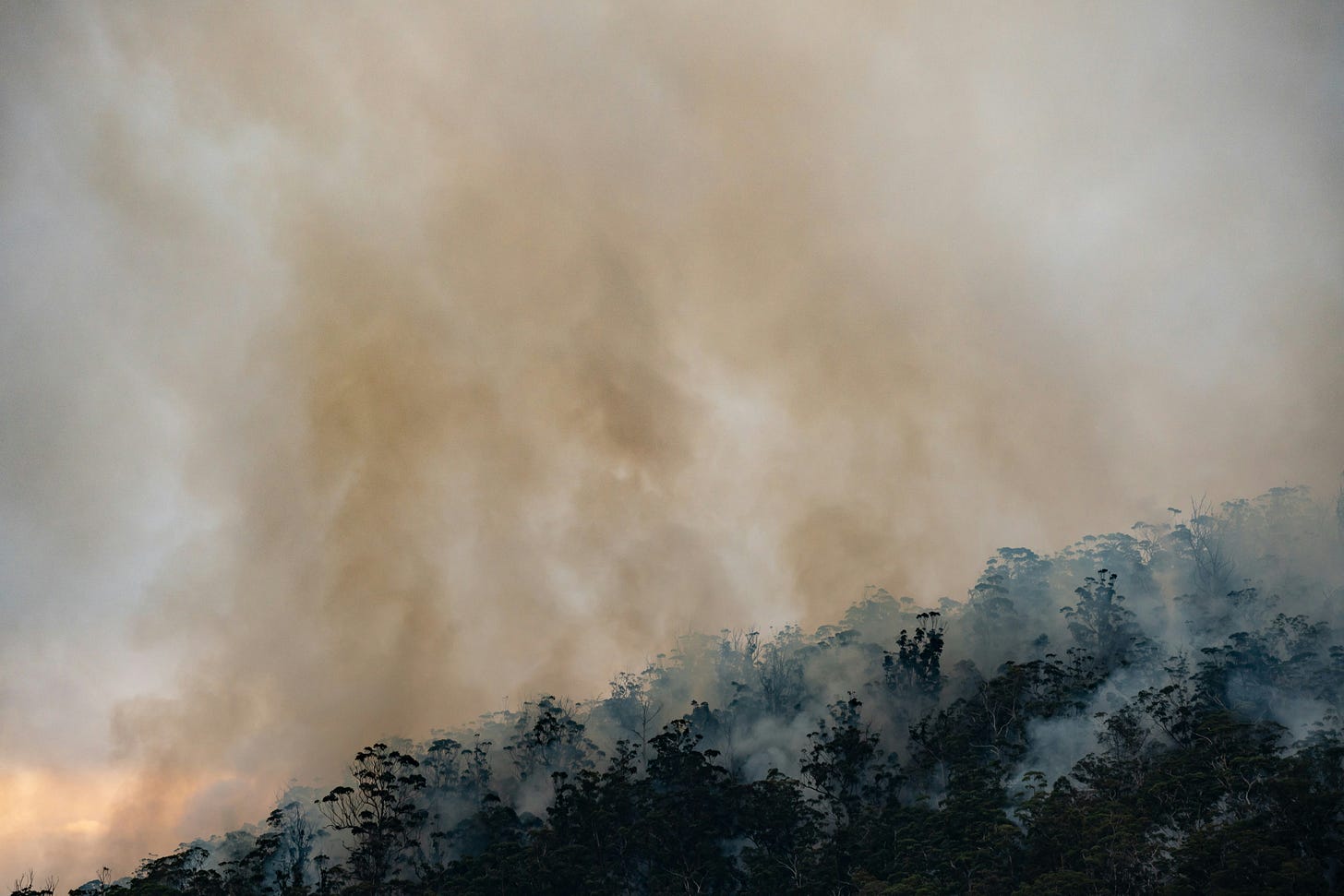Earth Day Reflections: Stories That Move Us
Narratives that inspire our approach to climate comms
As we celebrate Earth Day 2025, there’s much to reflect on from the collective years our team of climate storytellers has devoted to championing climate & energy gamechangers. LaunchSquad SVP Matt Calderone recently penned this piece on his takeaways from 25 years of telling these stories. It paints a clear picture of the adaptability required and the breadth of knowledge necessary to effectively communicate climate change.
Now we’ve opened the floor to our team of climate communicators to share stories that have personally moved and stuck with them. From stories of community resilience to human-centered narratives to spotlighting innovation, these insights inform our day-to-day approach and remind us why this work matters so deeply to us on a personal level.
Climate Meets the Real World
Jacob Douglas: The climate stories that have always had the biggest impact on me are the ones that show the reality of the problem. Those stories are grounded by the people already experiencing climate change in their communities. At the True/False Documentary Film Festival in Columbia, Missouri, I saw Sarah Wortzel’s River of Grass, a documentary told through the writings of environmentalist Marjory Stoneman Douglas, and the climate impacts on the Florida Everglades.
The film featured powerful stories about native people being displaced by storms and corporate construction, devastation from hurricanes, and foreign wildlife throwing off the Everglades ecosystem. These issues are easy to ignore when you aren’t confronted with them daily. Stories like this make climate issues pressing and rally support for a cause.
Similarly, another film at True/False showed the power of environmental storytelling. Middletown tells the story of high school student journalists in the 1990s who confronted city, county, state, and federal officials on toxic contamination from a local landfill in Middletown, New York. This was an inspiring message of resilience in the face of environmental crisis, and holding truth to power. Stories like these show the impact real people can have to incite change, even in the face of seemingly insurmountable power. It’s a message I think most people can relate to today.
Climate Dads
Liz Kyle: I love a good human-focused climate story. One that has stood out to me ever since I first read it was Olivia Rudgard’s Bloomberg profile on the rise of the “climate dads” movement: They’re Not Like Regular Dads. They’re Climate Dads. As the one-liner description reads, “Move over, sports dads and car dads. Climate dads are a little bit nerdy, a little bit obsessive, and 100% focused on saving the planet.”
The Climate Dads group has grown to 800+ fathers in 20 US cities. As someone who has worked in the climate and clean-tech storytelling space for almost five years, it’s always inspiring to see how the everyday human thinks about addressing climate change in their own backyard. Plus, I’m inspired by these parents’ approaches to teaching the next generation how to value the planet and bring more climate-conscious practices into their own lives. This quote resonates most with me: “What you don’t want to do is inculcate a sense of despair in your children about their future,” Murray says. “What I’m trying to do is build a sense in them of their own agency and their own ability to change the world.”
Resilience Without the C-Word
Maggie Fedorocsko: Wildfires! Extreme heat! Hurricanes! Oh my. Our society is facing unprecedented extreme weather, and we're all living it each day. That’s why I audibly gasped last month when I saw The Guardian make this bold move: They recreated a FEMA climate future risk tool that was deleted by the new Trump administration for being too climate-y.
Beyond being a journalistic tour de force, this sums up challenges impacting climate comms across the board. This data tool isn’t partisan; it’s critical intelligence that can save both lives and property. Local governments, insurers, and utilities all depend on this information as devastation continues to crumple American communities. As the piece points out, the projected losses from these events could reach as much as $191M or more each year by mid-century. But… it was still just too close to climate.
What this means for us as climate communicators is that even though demand for climate-proofing solutions and resilience/adaptation tech will continue to grow, companies in this space will continue to face scrutiny if they lean too hard on climate. We’re seeing a plethora of innovative companies in this space – from tackling wildfire management to creating wearables that monitor hotter temps – and it’ll be important to see others step up to the plate and overcome these challenges with new language and framing that still shows the very real threats facing communities.
Innovation Nation
Jon Shieber: The amount of entrepreneurial and creative energy unleashed on the problems of building a better, more abundant society is staggering. It’s great to see these innovators (whether in technology, business, or policy) get their due. And the stories that celebrate their achievements are so sorely needed in the current moment. This piece on a funeral director in Missouri who brought wind power (and $5 million more in funding) to his small town is just one example.
Across the country and around the world, small wins like these are being repeated, bringing cleaner, domestic energy to the communities that can benefit most from it. And just thinking of what’s on the horizon is enough to make anybody giddy.
America is building the world’s first commercial fusion energy power plant in Virginia, scaling a multi-day energy storage system in New England, making chemicals from plants in Houston, and manufacturing new advanced conducting transmission lines in South Carolina. And don’t even get me started on the companies turning mining waste into critical minerals or the business transforming abandoned Appalachian mines back into forests.
These companies are addressing very real problems with sustainable solutions that can have a positive impact on communities and make the U.S. globally competitive. On Earth Day, and every day, you love to see it.
Climate History Through Photos
Roz Paradis: I was required to take a Human Geography course in my Freshman year of college. I thought it’d be all about maps and memorization, but it actually covered the movement of people and the impact on the Earth. Although I’ve been a tree hugger ever since I can remember, that course is what pointed me toward a career dedicated to climate solutions.
I still think about the image shown on the projector of the World’s First Underwater Cabinet meeting that took place in the Maldives in 2009. It was one of the most impactful depictions of what this low-lying country’s reality would look like without major climate intervention, a way to showcase to the rest of the world who have the privilege of not being on the frontline of the effects of climate change. Unfortunately, so many photos have joined this library of impactful imagery showing the consequences and destruction since then. I keep going back to that photo in the Maldives. One that had a moment in the limelight before it was too late, yet it is still a very real possibility.
A Seat At The Table
Kaitlin Rymer: Jack Harries, a former travel vlogger who documented his adventures across the globe, started Earthrise, a company dedicated to telling the human stories of the climate crisis. In 2020, they partnered with YouTube ahead of COP26 to create Seat At The Table, a series highlighting the untold stories of the communities and individuals most impacted by climate change.
What I loved the most about the project is how they created a literal “seat at the table” to bring their voices directly to the world leaders at COP26. One of the board rooms for negotiations featured photos and clips of the stories highlighted in the series. This is a great example of how young creators can channel their passions (in this case, travel and filmmaking) to put the real impacts of climate change on display in front of key stakeholders.
Finally… here are some of the stories we’ve been telling:
🎥 Scaling CDR meets film
Film director Leila Conners – known for her climate documentaries The 11th Hour and Ice on Fire – joins Carbon Herald’s Carbonsations podcast to discuss her climate involvement and the ins and outs of making her latest movie, Legion 44, which is dedicated solely to carbon dioxide removal.
🚢 Cleaning up air pollution & capturing CO2 straight from a ship’s exhaust
Spectrum News covers a historic achievement from STAX Engineering and Seabound: they successfully demonstrated a first-of-its-kind fully integrated emissions and carbon capture solution that captures both harmful pollutants and carbon emissions at the Port of Long Beach. It is the first comprehensive, cost-effective solution for the maritime industry, without requiring vessels or ports to undergo retrofits and costly structural changes.
🗑️ Waste to carbon removal
Vaulted Deep was recognized in XPRIZE’s Carbon Removal competition – the largest incentive prize in history. Vaulted earned second runner-up and an $8M award for its innovative approach to turn otherwise unusable organic waste into permanent carbon storage, making headlines in Heatmap News, Trellis, and many others.








